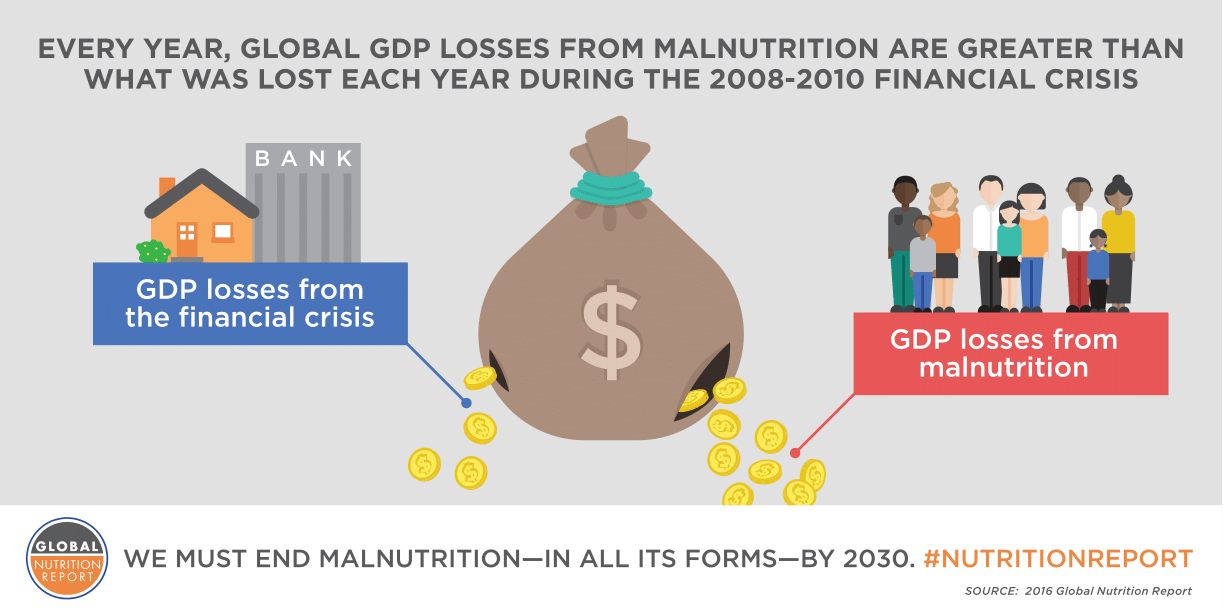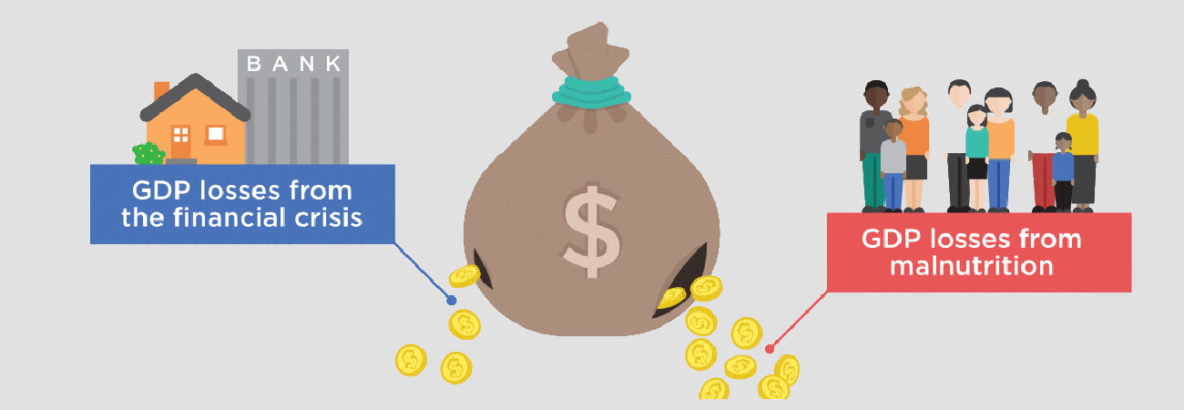I was recently invited to attend the UK launch of the Global Nutrition Report in London. The report is a huge group effort created by over 100 contributors from around the world, looking at how nutrition is experienced on a global level. My invitation was due to my imminent commencement of the Food Policy MSc course at City University London, a course which looks in detail at all aspects of the global food chain and our interaction with it.
A New Perspective.
Due to the way that Food is a cornerstone of civilisation, not to mention a diverse and complicated topic, it was hugely enlightening to hear the details of the report, because frankly, it’s headline findings are very easily conveyed in some simple, straightforward numbers.
But first, let’s start with the word ‘malnutrition’. What does that mean to you? Shockingly underweight kids in Africa featured during video clips with Lenny Henry on Comic Relief? Or is it something to do with that chugger outside Westfield who was muttering something about hunger and poverty whilst waving a direct debit form in your face?
Perhaps you can envisage scenes of Daily Mail-esque tabloid images of poverty stricken states ravaged by famine, drought or floods who are unable or simply failing to provide their population with enough food to live and grow as healthy, nourished human beings?
So if I asked you to guess what percentage of the UK adult population is classed as malnourished according to the report, where would you place your bet? 3%? 5%? 15%? 50%? Somewhere else?
I bet you weren’t expecting that. I certainly wasn’t.
This is because an incidence of malnutrition is when someone is inadequately nourished, which is then detrimental to their health. This can be in the form of not getting enough good food, or it can mean eating too much bad food, which is the type of malnutrition that’s seeing big global rises, especially amongst people with developing or developed societies.

What is Malnutrition?
First, let me set the goalposts for you. The definition of being overweight is carrying excess body fat and having a BMI equal to or greater than 25. Obesity is when you have excess body fat and tip the BMI at 30 or more.
The UK overweight figure of 63.4% puts us at number 160 out of 190 countries listed, with number 1 having the smallest percentage of overweight adults and 190 being the highest incidence. We’re in almost exactly the same position for adult obesity, level with Mexico at number 159, with 28.1% of adults being obese.
This is the ‘eating too much of the bad stuff’ side of the coin. People’s weight has a direct link to how common diseases such as cancer, heart disease and diabetes are. The bigger people are, the younger they die, and the more pressure they put on their family and society as a whole. These are all simple facts of life.
In the US, an obese person in a household increases medical costs by 8% of the household income. In China, diabetes results in a 16.3% loss of income. The rise in overweight adults and obesity has created an epidemic of non-communicable diseases. These are the health issues which you don’t catch from someone else, conditions such as heart disease, diabetes or cancer.

‘Traditional’ Malnutrition
As we move around the globe, you’ll also find children who have simply not grown sufficiently, because they don’t get enough of the right food. 45% and up to 70% of children in some countries around the globe are suffering from this form of malnourishment, known as stunting. Other forms of malnourishment in the early stages of a child’s development results in an underdeveloped brain and a lower IQ, simply from not getting enough of the right food.
If a country exists with children growing up who are malnourished, it has a knock-on effect on the strength of your society as a whole. How can future generations strive forwards when they’re underdeveloped? Research shows that the economic consequences of malnourishment represent an 11% loss of GDP every year in Africa and Asia, whereas spending on prevention delivers $16 return for every $1 invested. That’s the best return on income you’ll see advertised anywhere and it’s backed up with proof.
Allow people to fulfil their destiny through their own will.Mr Koji Tsuruoka; Japanese Ambassador to the United Kingdom

Licence to Ill.
Malnourishment, in all of it’s forms is the NUMBER ONE driver of global disease. And the killer thing? There’s enough food in the world to go around. It’s just not getting to all the places it needs to, in the right proportions.
The big headline that comes out of this report is that one third of the entire population of the world is malnourished, whilst at the same time, 30 percent of food is wasted. These facts alone are enough to realise that there’s something going wrong on a pretty massive scale regarding how we deal with food around the world.
In a bid to do something about this, the UN has enshrined the objective to end all forms of malnutrition by 2030. The exact definitions of what this means are detailed in the report, which is available online here. But the headline story is that things need to change in pretty much every country in the world during the next 14 years otherwise these are just empty words.
The problem is that the solutions aren’t very politically attractive. Any attempt at dealing with malnutrition won’t see very quick results and certainly isn’t going to get a big newsflash breakthrough quickly for any political party, hence doesn’t appeal to political vanity.
one third of the entire population of the world is malnourished, whilst at the same time, 30 percent of food is wasted.Global Nutrition Report 2016
Thank You for Listening.
However, there is a very simple way to increase the chances of something happening, which is by knowing this problem exists. By virtue of the fact you’ve made it to this final part of my article, you’ve done most of the hard work. The next part is to tell someone, just to let them know what is happening in the world.
It’s a small,a easy step, but it’s also an enormous leap as it increases awareness, which in turn will help lead to action. By getting to the end of this post, you’ve taken part, you’ve helped me tell someone, in this case, you, about what’s happening in the world, so I’d like to thank you for doing your bit.
Now it’s your turn.
The Global Nutrition Report 2016
The global nutrition report is available online to here.

